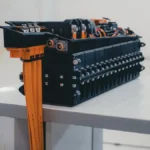Saharan Dust Making Solar Energy Less Powerful in Europe
Have you ever wondered why solar panels don’t always make as much electricity as expected? A surprising culprit might be dust from thousands of miles away. According to IndiaToday, researchers have found that dust from the Sahara Desert is making solar energy less reliable in Europe.
Dr. Gyorgy Varga and a team from Hungarian and European research groups have discovered that tiny dust bits from North Africa are hurting solar power in many European countries. They shared these findings at the European Geosciences Union meeting called EGU25.
“There’s a growing need for dynamic forecasting methods that account for both meteorological and mineralogical factors,” says Dr. Varga about the dust problem.
How Desert Dust Blocks Solar Power
The Sahara Desert sends billions of tonnes of dust into the air every year. This isn’t just a small problem – tens of millions of tonnes reach Europe annually. This dust causes trouble for solar panels in several ways:
- Dust particles float in the air and block or scatter sunlight before it reaches panels
- Dust makes it easier for clouds to form, creating more shade
- Dust settles on the panels themselves, creating a dirty layer
- The tiny particles change how much sunlight reaches the ground what scientists call surface irradiance theres a growing need for dynamic forecasting methods that account for both meteorological and mineralogical factors says Dr. Varga about the dust problem.
The Big Drop in Solar Power
The research team looked at 46 different times when Saharan dust moved over Europe between 2019 and 2023. They found serious drops in solar power production. These dust events affect both Southern and Central Europe.
| Region | Impact on Solar Power | Source |
|---|---|---|
| Hungary | 30.9% worse power during dust events compared to normal days | EGU25 Research |
| Southern Europe (Portugal, Spain, France, Italy, Greece) | Significant drops in power output during dust events | ScienceDaily |
| Areas with frequent dust storms | 10-20% potential power loss from both airborne and settled dust | KIT’s PerduS project |
| Southern Portugal | 3-8% decrease in power output during 2017 dust events | ResearchGate |
Why Current Prediction Tools Don’t Work Well
ScienceDaily reports that today’s solar energy forecasting tools use old, fixed data about particles in the air. These tools can’t adjust quickly when sudden dust clouds arrive.
The National explains that current models only look at average dust levels, which makes them fail badly during these special dust events from Africa.
According to Wionews, these forecasting problems create headaches for power grid managers who need to plan ahead for how much solar energy will be available each day.
Better Ways to Predict Solar Power During Dust Events
The researchers have several ideas to fix these prediction problems. Technology Networks recommends these improvements:
- Add real-time dust measurements to forecasting systems
- Create better models showing how dust affects cloud formation
- Consider both weather patterns and the specific mineral makeup of the dust
- Develop more flexible forecasting that can adjust quickly during dust events
EurekAlert! highlights that these changes would help create more reliable solar energy scheduling during dusty periods.
Why This Matters for the Future
As more countries, including India, build more solar panels, understanding these dust effects becomes increasingly important. Better forecasting means:
- More stable power grids that can plan for drops in solar production
- Lower maintenance costs from better panel cleaning schedules
- More accurate predictions of how much power solar farms will produce
- Better planning for backup power sources when dust events happen
With climate change making weather patterns more unpredictable, solving this dust problem is becoming urgent for renewable energy.
So the next time your city has a hazy day with a reddish sky, remember it might not just be local pollution – it could be Saharan dust traveling thousands of miles to visit. And that same dust might be making your local solar farm work less efficiently too.











